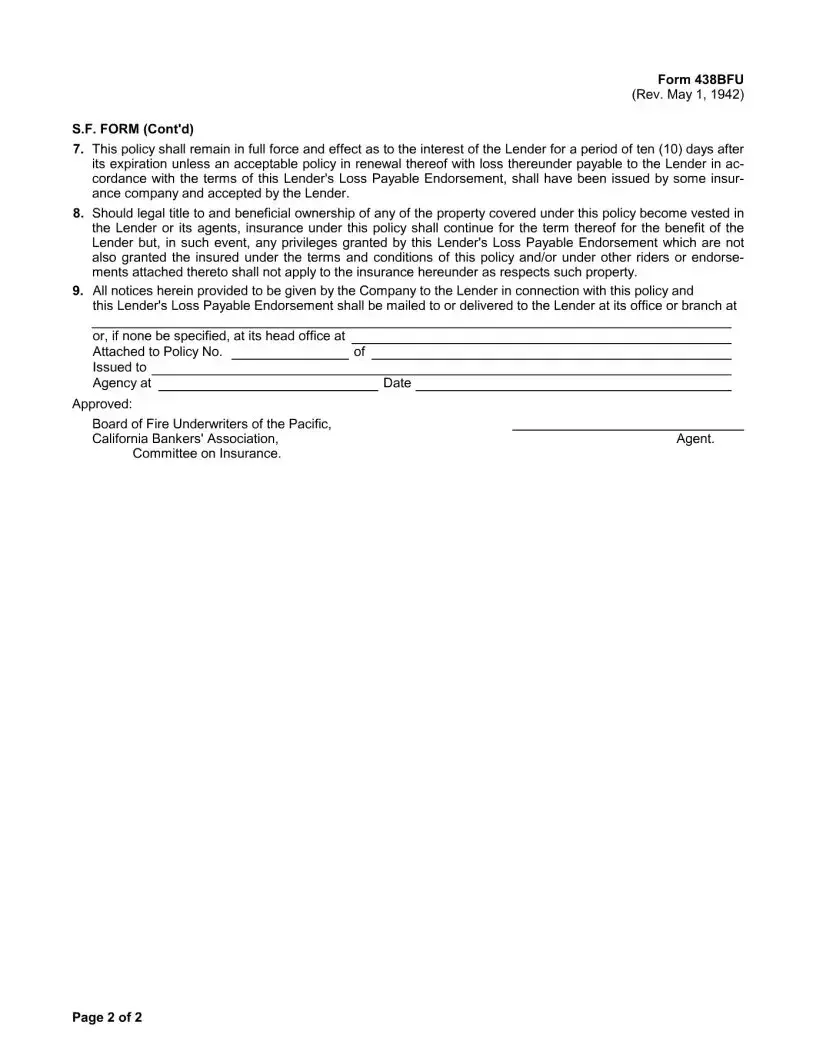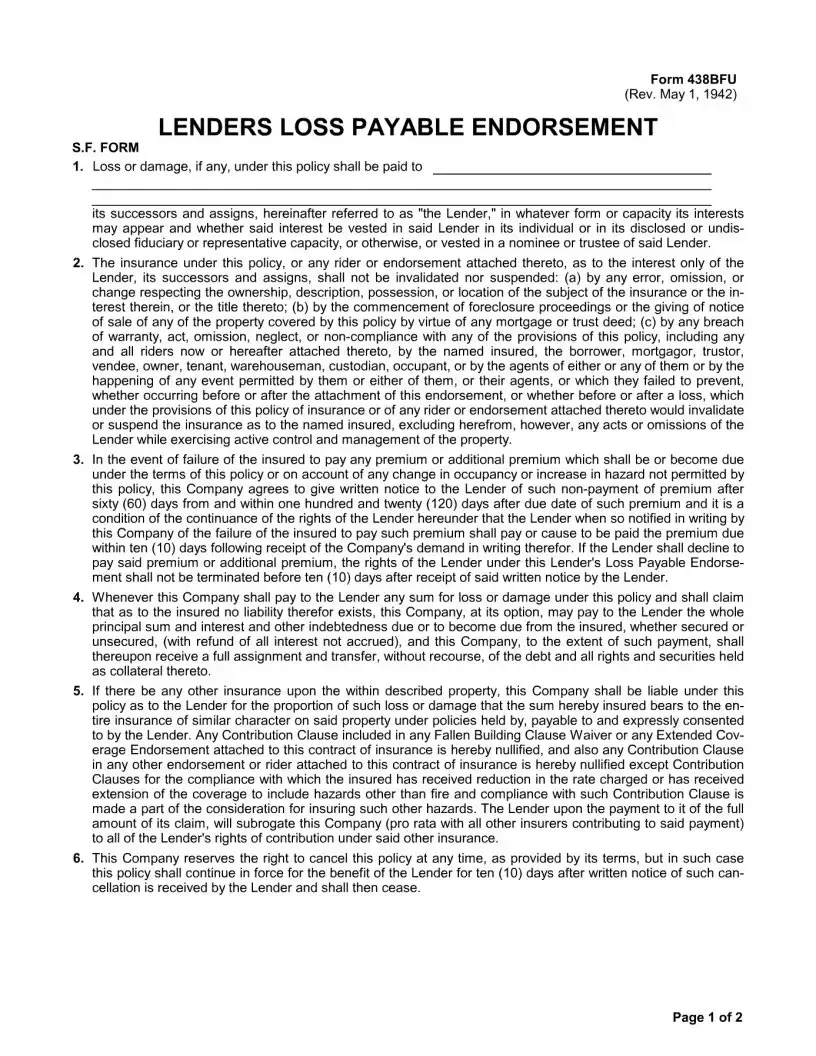Fill Out Your 438Bfu Form
Form 438BFU, also known as the Lender’s Loss Payable Endorsement, is a significant insurance document that outlines the rights and responsibilities of lenders in relation to insured properties. This endorsement ensures that lenders are protected in cases of loss or damage, outlining the conditions under which claims will be paid. Understanding the details of this form is crucial for both lenders and insured parties in maintaining compliance and securing financial interests.
To ensure that your interests are protected, fill out the 438BFU form by clicking the button below.
Launch 438Bfu Editor Now


